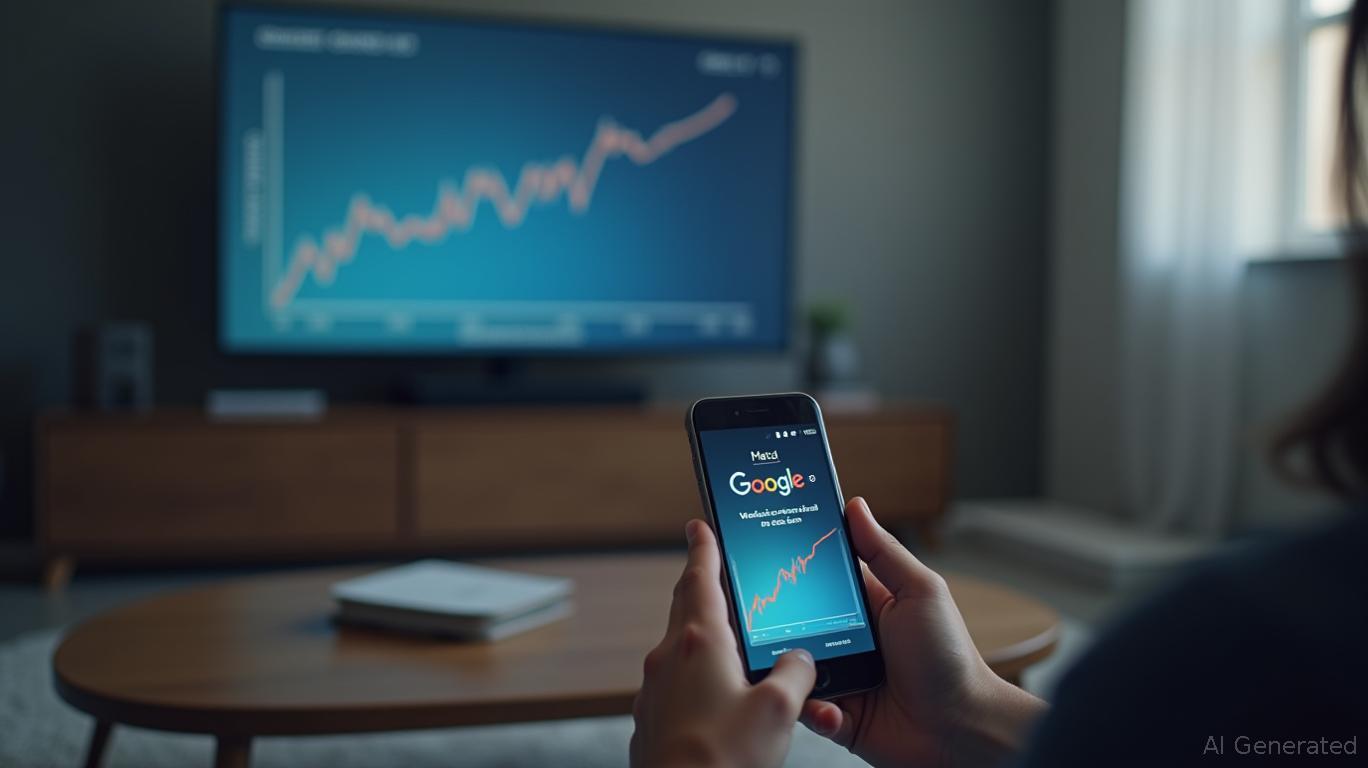Navigating the Digital Ad Slowdown: Identifying Resilient Plays in a Cautionary Market
The digital advertising landscape is undergoing a seismic shift. Tariffs, geopolitical tensions, and a looming recession have sent advertisers into a defensive crouch, reshaping budget allocations with unprecedented speed. For investors, the challenge is clear: identify which platforms can weather the storm and which will drown in it. The answer lies in sector-specific allocation shifts and the unyielding power of platform differentiation. Let's dissect the winners, losers, and the critical plays for those seeking resilience in this cautionary market.

Meta: The Unstoppable Growth Engine
Meta's first-quarter results underscored its dominance. With revenue up 16% year-over-year to $42.3 billion—well above Wall Street's estimates—the company's AI-driven ad ecosystem has become a moat against the slowdown.
The key advantage? Meta's ability to command premium pricing. Ad impressions rose 5% year-over-year, but average ad prices jumped 10%, proving demand for its scale and data. Even in a cautious environment, brands are doubling down on Meta's platforms. “This isn't just growth—it's structural,” said one Wall Street analyst. “Meta isn't just a company; it's a system.”
Google: Margin Resilience Amid Headwinds
While Meta's top-line growth steals headlines, Google's profitability remains a beacon of stability. Operating margins of 32%—lower than Meta's 42% but still robust—reflect its ability to extract value from search and advertising's bedrock: user intent.
Yet Google faces a dual challenge. Microsoft's search engine, growing at 17% year-over-year, is siphoning ad spend, while Performance Max (PMax) campaigns—though widely adopted—are underperforming. PMax's 13% higher CPC and 7% lower ROAS compared to standard ads suggest advertisers are seeking control. Still, Google's $89.5 billion in Q1 revenue (up 9% year-over-year) and its dominance in shopping ads (despite Temu's exit) highlight its entrenched position.
Investors should watch for Google's AI investments—like Gemini—to recalibrate its ad stack. The question isn't whether Google will adapt, but how quickly it can leverage its data and infrastructure to outmaneuver rivals.
CTV: The Strategic Imperative
The shift to Connected TV (CTV) isn't a fad—it's a revolution. By 2025, CTV ad spend is projected to hit $26.6 billion, a 13% jump from 2024, as advertisers reallocate budgets from linear TV and underperforming social platforms. .
Why now? Three forces are at play:
1. Live Sports Migration: The Netflix Tyson-Paul fight (108 million viewers) proves CTV's capacity to command mass audiences.
2. Programmatic Democracy: Self-serve platforms like AppLovin's DTC network—reaching 1.4 billion users—democratize ad access.
3. Interactive Ads: Formats like QR code overlays and product galleries boost engagement by 71 seconds versus standard pre-roll, justifying premium CPMs.
Investors should focus on CTV's infrastructure plays. Roku, though facing Amazon's entry, retains a first-mover advantage. Amazon Prime Video's ad-supported tier, projected to rival Roku's revenue share by 2027, adds urgency to this space. Meanwhile, Northbeam's Multi-Touch Attribution tools, used by brands like Grüns, offer a path to measurable ROI in an era of budget austerity.
The Losing Bets: Linear TV and Social Laggards
Not all sectors are created equal. Linear TV's ad spend is projected to drop to 11.2% of total TV/video budgets by 2026, as streaming closes the time-spent gap. . Networks clinging to traditional audiences face margin erosion as advertisers chase younger, engaged CTV viewers.
On the social front, Snap and Pinterest—once darlings of the digital ad boom—are fading. Their Q1 results lagged Meta's by double-digit margins, and their inability to scale beyond niche markets makes them vulnerable. Investors should treat these stocks as cautionary tales: platforms without AI, scale, or defensible ad models are casualties-in-waiting.
Actionable Insights for Investors
- Double Down on CTV Infrastructure: Buy shares in Roku and Amazon (for Prime Video). These companies are at the vanguard of a $32.6 billion market that's still underpenetrated.
- Hold Meta and Google: Their AI-driven ad stacks and user bases are defensible in a slowdown. Meta's Threads and Google's Gemini are critical to long-term growth.
- Avoid Linear TV Stocks: Cable networks and traditional broadcasters face structural declines. Their dividends won't offset declining ad spend.
- Beware the Social Also-Rans: Snap and Pinterest lack the scale or innovation to compete. Their shares are better off in speculative portfolios, not core holdings.
Final Word: A Shift in the Winds
The digital ad slowdown isn't an end—it's a reset. The winners are those who align with advertiser priorities: scale, data, and measurable ROI. CTV is the new frontier,
and Google the titans, and linear TV a relic. Investors who pivot to these truths will navigate the storm—and profit from it.The market is telling us to look forward, not backward. The question is: Are you listening?

Comments
No comments yet